Artificial Intelligence in the workplace is a big game-changer. It morphs businesses and impacts the essence of jobs. Technology is racing ahead. All over the world, companies are turning to AI to boost their work, heighten productivity, and pave the way to innovation. In this article, Nexle Corporation will dive into how AI adjusts the work environment and which tools are top-notch for every industry.
What is the Impact of AI in the Workplace?
Artificial intelligence in the workplace can lead to noticeable gains, like a boost in efficiency and savings in expenses. Plus, other unexpected perks might occur. Say, a more people-focused environment or a space where employees are content and well. As we can see, AI solutions can greatly affect efficiency and improve the day-to-day tasks in the workplace. It’s usually those kinds of savings and efficiency boosts we’re talking about.
How is AI Used in the Workplace?
There’s no end to the possible accomplishments of AI. But for now, AI-related work activities concentrate on three main areas:
Automation
When discussing artificial intelligence in the workplace, people usually consider the software that does specific tasks automatically. Its aim tends to be to improve productivity.
Mostly, AI excels at copying simple and routine jobs. Automated services like answering machines, digital customer aid, and intelligent aides are becoming regularly used this way.
It’s also great for jobs like entering data, signing up customers, handling payroll, saving costs, scheduling, tallying sales, security checks, and lots more in the hiring process comes under the umbrella of these potent tools.
Data
Tons of companies today possess the assets to collect a lot of data. But, possessing data and employing it effectively are completely different skills. Thus, companies are now leaning on AI to enhance every part of the journey. This ensures that businesses can tap into the right real-time and historical measures for making superior choices.
Communication
Last but not least, the social side of work may be strengthened by using artificial intelligence in the workplace. Autocorrect and voice-to-text can improve the communication aspect among co-workers. Natural language processing, smart meeting tools, and advanced collaboration platforms are some of the most cutting-edge solutions that may improve relationships and teamwork.
Top 11 AI tools that can revolutionize your work environment
Ai Tools For Software Developers
1. Scribe
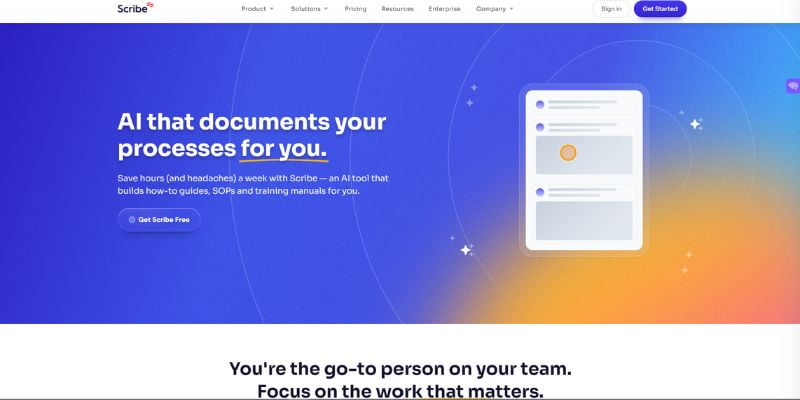
Scribe can help us write, organize, and update documentation
To help programmers write, organize, and update their documentation, we have Scribe. Using Scribe’s automatic tools, you may streamline your development process in thousands of ways.
Scribe can be used to document your steps in detail, creating a useful guide for future reference. It’s also great for instructional explanations, as it can generate reference materials like databases, tutorials, and walkthroughs to clarify your software methods.
2. Tabnine
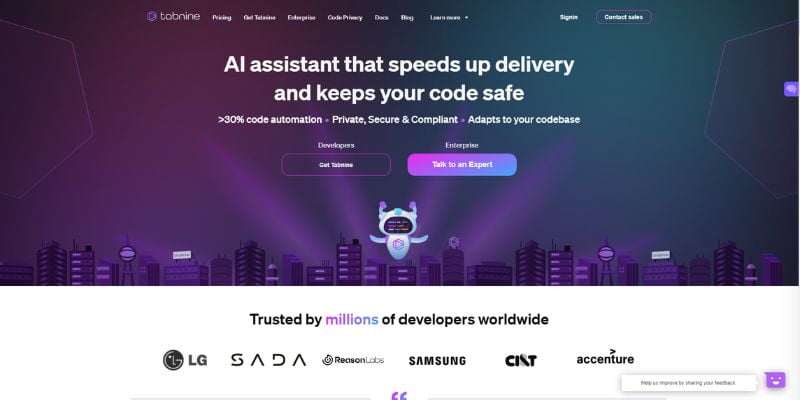
Tabnine is integrated with JavaScript, Python, TypeScript, PHP, C/C++, HTML/CSS, and React
Tabnine is an extensively utilized artificial intelligence tool in the programming field. It is highly regarded for its security and privacy features. Moreover, Tabnine employs machine learning techniques to automatically convert natural language explanations into functional code, assisting with effortless autocompletion.
It is a code assistant that, with repeated use, may learn your coding motifs and use that information to predict what you plan to do, then provide helpful ideas. In time, the program may learn your preferences and make suggestions in the same way that you would. When compared to other AI tools, it performs significantly in its ability to provide code recommendations in context.
The tool also seamlessly integrates with well-known programming languages such as JavaScript, Python, TypeScript, PHP, C/C++, HTML/CSS, and React. Additionally, it is compatible with other popular integrated development environments (IDEs) like Visual Studio Code, IntelliJ, Sublime Text, and Atom . With the tool’s adaptability, you may use it for web development, data science, or mobile app development without decreasing the quality of your work.
3. GitHub Copilot
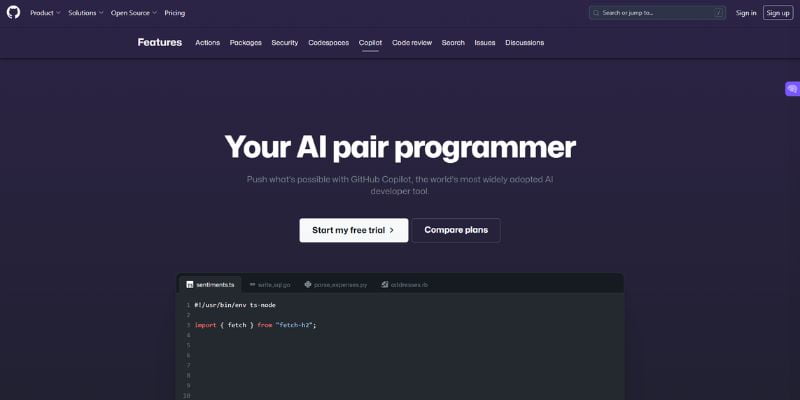
Github Copilot – a well-known tool for developers
OpenAi CodeX, an artificial intelligence system developed by OpenAI and trained on diverse data gathered from a broad range of sources, functions as the brain of Github Copilot. Developers whose native language is not English will find the tool’s ability to interpret and translate code into different languages to be very useful.
When you start typing the code, the program will finish it by making auto-suggestions. All you have to do is describe the task in natural language, and it will swiftly generate the code. As you work, the tool learns about the context of your code and provides ideas. As a result, it can read and execute programs written in any language.
As an added bonus, you may include Github Copilot in popular integrated development environments (IDEs) like Visual Studio Code. Another time-saver is that GitHub Copilot may be used to run tests on your code.
Read more: Artificial Intelligence In Healthcare: Use Cases and Upcoming Trends (2023)
Writing AI tools
4. ChatGPT

ChatGPT – the king of AI in the workplace
When ChatGPT was first released, it provided an amazing experience that continues to impress people with its exceptional results. It is a conversational artificial intelligence in the workplace that can fulfill almost any request. Just tell it your specific requirements and wait for the best answer. rgb(255, 195, 134);”> Whether you require content outlines or detailed blog posts, this versatile AI tool can handle it all.
5. Bing Chat
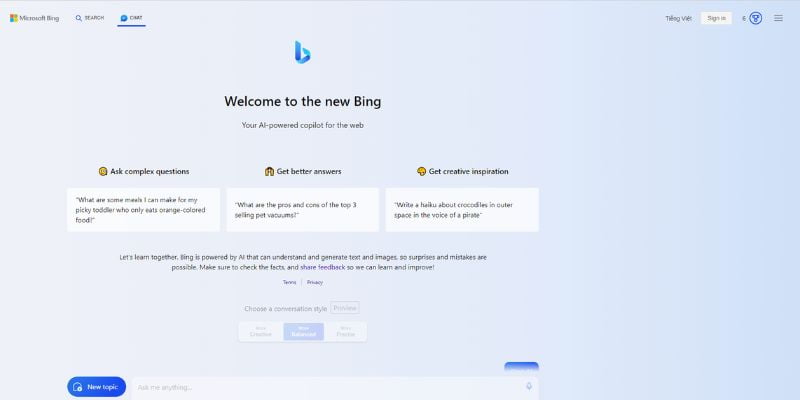
Bing Chat – a tool for everyone
Bing Chat offers a variety of convenient features, like generating pictures and providing web-based responses.In addition to using it to check my grammar before sending a message, we can also use it to rewrite paragraphs when having trouble finding the appropriate words. What’s more, is that we may read up on the subject further by following the links provided in the citations.
6. Grammarly
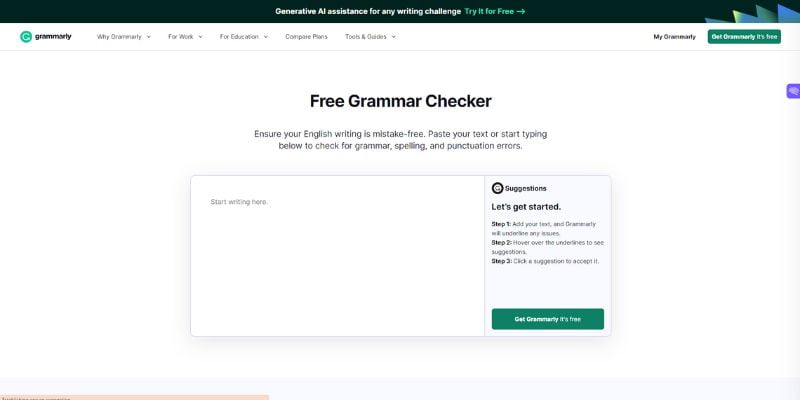
Grammarly – a top tool for copywriters
Grammarly, a tool often overlooked, can be incredibly useful. It is known for its ability to correct spelling, grammar, and conciseness in everyday writing.
In order to keep up with the advances in generative AI, Grammarly is launching additional features that may make your life easier. For example, when writing messages on various platforms (like LinkedIn or email), you have the option of selecting a voice that specifies the level of formality and tone to be used.
7. Remail
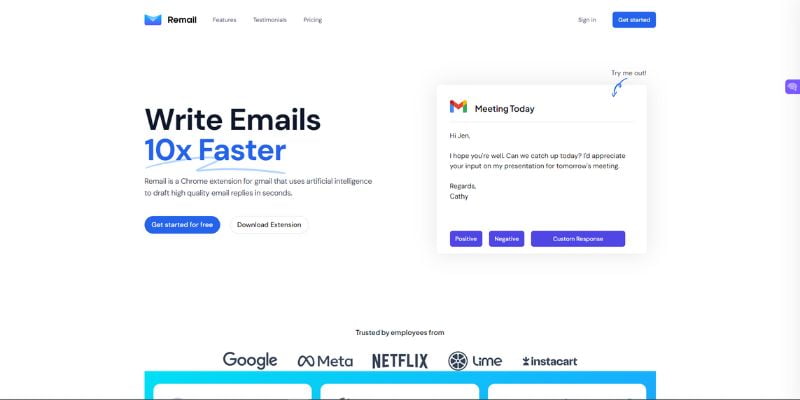
Remail – handy AI tool for email marketers
Many professionals across various industries rely on email for their work. One tool that can assist with managing email is Remail, an artificial intelligence platform. According to Remail’s website, employees at companies like Meta, Google, and Netflix use this tool.
The Remail Google add-on for Gmail gives you the option to choose positive or negative responses to emails. It then generates a detailed reply based on your thoughts and maintains the same tone and style. Remail allows you to tailor your responses by providing a brief description of your thoughts and then generating a complete reply based on that description.
Read more: How To Develop AI Software In 6 Easiest Steps?
Boost Your Productivity Tools
8. Otter.ai
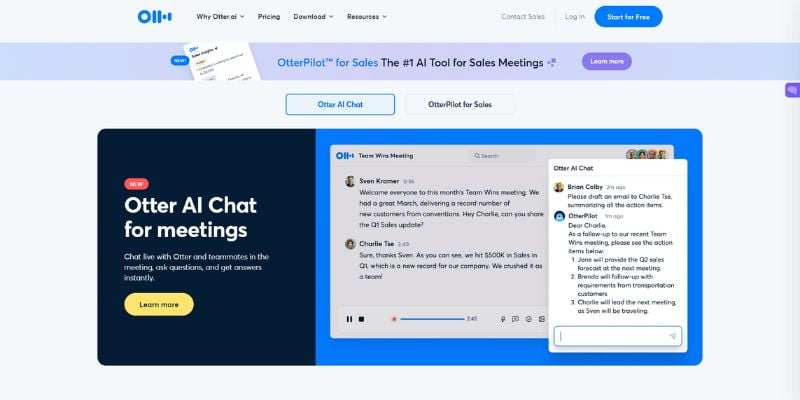
Otter.ai – a tool to enhance your conversation
Otter.ai provides a convenient solution for those who engage in frequent and demanding handwritten discussions. Whether you are a student capturing lectures or an interviewer recording interviews on a regular basis, Otter.ai is a reliable tool that saves valuable time.
In just a few short minutes, Otter.ai can transcribe an entire audio file from a speech recording. This AI in the workplace provides a pretty accurate transcription, complete with pronunciations and time stamps.
This tool offers features like unlimited imports and advanced searches. To access these features, you need to pay a monthly membership fee of $8.33. If you prefer not to pay, there is a free plan available on Otter.ai. However, the free plan has limitations. You can only transcribe 300 minutes per month, with a maximum of 30 minutes per discussion. Additionally, with the free plan, you can only import up to three files in total. If you record important discussions elsewhere, the free plan may not be suitable for you.
9. Todoist
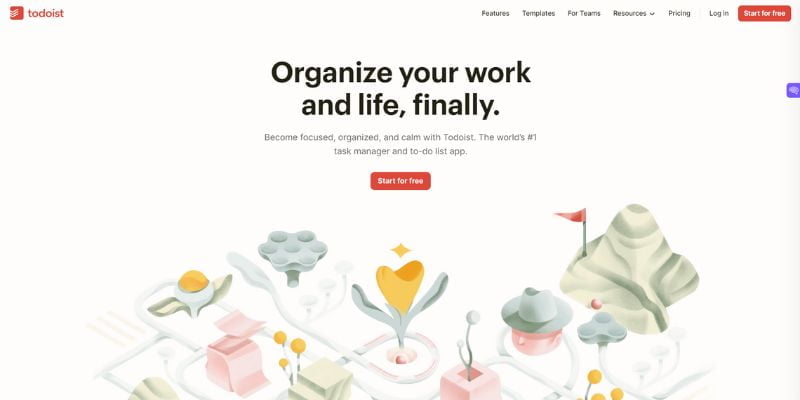
Todoist – AI tool for utilizing your tasks
Tech-savvy employees may not like making paper lists of tasks. Alternatively, the add-on program Todoist may be useful. The desktop and mobile versions of Todoist provide extra features, including shared to-do lists, the ability to monitor your progress and reminder alerts.
To help them stay on track and get everything done, more than 800,000 people have downloaded it as a Chrome extension. Users may add items from any website, such as a blog post they’ve desired to read or a product they’d want to buy, to their list of things to do. That way, there won’t be any interruptions to the user’s flow of work caused by having to switch between platforms to add or complete tasks.
10. Brain.fm
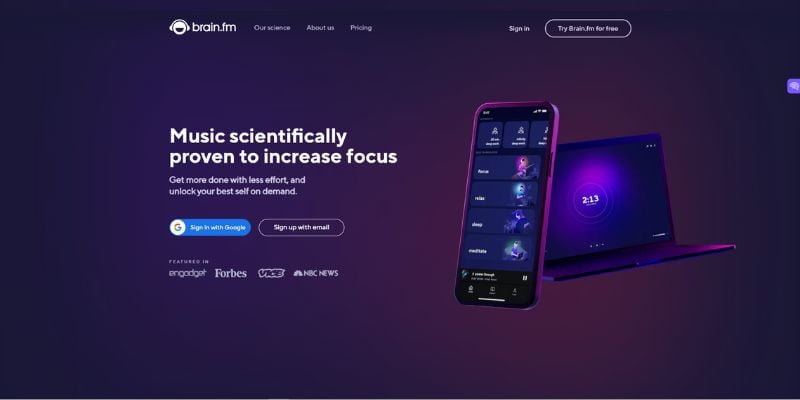
Brain.fm – Boost your focusing period with AI
Working from home might make it challenging to stay focused on tasks without insightful artificial intelligence in the workplace. To help users focus, Brain.fm creates music using artificial intelligence. The program provides users with a variety of musical selections, from ambient to electronic, that a group of scientists and composers has developed to facilitate “deep work,” or prolonged periods of undistracted concentration.
11. BlockSite
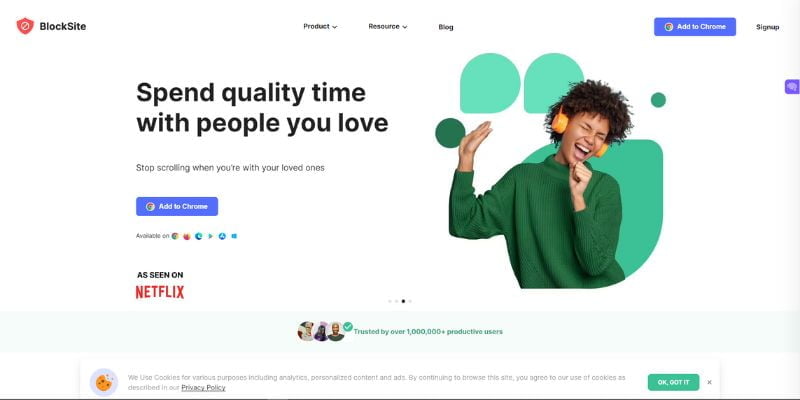
BlockSite – Eliminate all distraction with AI
Employees might be attracted to check their personal social media accounts or read the news while on time at work. If that describes you, the BlockSite plugin could be what you need.
The BlockSite Google Chrome plugin has been downloaded over a million times and allows employees to temporarily restrict access to potentially distracting websites. Password-protecting the sites makes it more difficult for anyone who would want to cheat the rules in order to do so.
The browser extension not only gives information about the amount of time a person spends on a website but also includes a feature called focus mode. Focus mode lets users allocate a specific time limit for a specific job.
Read more: Artificial Intelligence in Robotics: Top 6 Use Cases and Future (2023)
In conclusion, the workplace is undeniably being revolutionized by Artificial Intelligence. Finding a balance between embracing AI’s potential and ensuring its responsible use is crucial for humans and machines to coexist harmoniously.
In the journey towards an AI-driven future, it is crucial to cultivate a culture of adaptability, reskilling, and lifelong learning. This will enable the workforce to flourish alongside intelligent systems. The narrative of artificial intelligence in the workplace is still unfolding, and its outcome depends on the decisions we make today. It is our responsibility to harness its potential for the benefit of society, businesses, and individuals.


